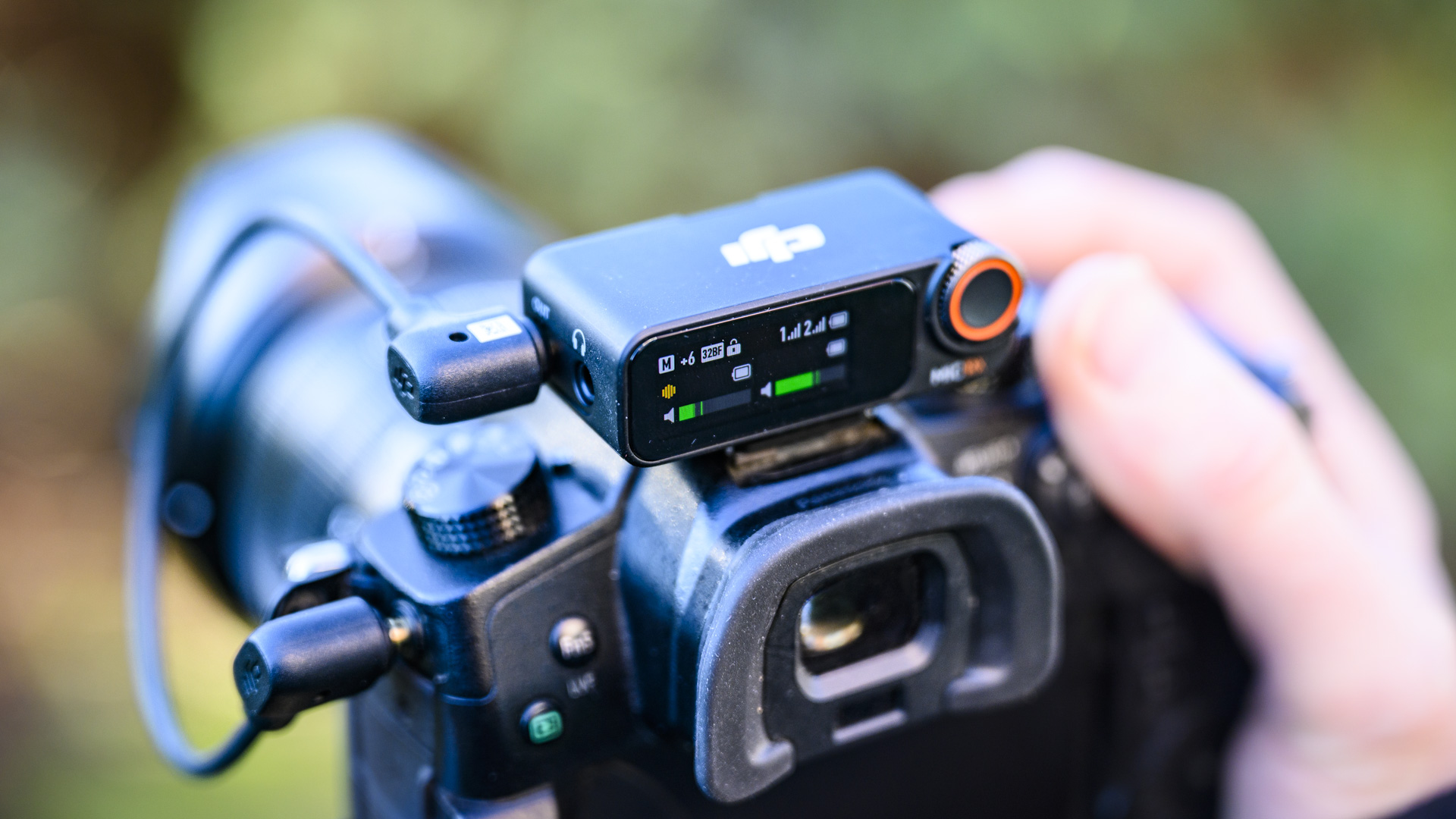
DJI Mic 2: Two-minute review
The DJI Mic 2 is a portable wireless mic system that delivers high-quality sound – especially clear vocals – without the fuss that often comes with complicated pro-level audio gear.
Succeeding the DJI Mic, which is a TechRadar favorite for those creating video content on the go, this second-gen model is a big upgrade in a familiar package and boasts smart pro-level features, namely 32-bit float audio and AI-powered ‘intelligent noise reduction’.
With reliable magnetic mounts for quick mic setup with your subjects, and instant sync between mic and receiver, plus optional lav mics available, you can start recording audio in the DJI Mic 2's auto mode, even in complex environments, without worrying about clipping, or unpredictable distracting noise around you.
I'd definitely opt for the complete kit, which includes two transmitters (mics, with windshields) for dual-channel audio, and one receiver that attaches to your camera of choice. Two transmitters can cover two subjects, or a single subject with stereo sound, whatever your camera. These components come in a charging case that auto syncs what's inside, plus the necessary connectors, and it all squeezes into a tiny carry case.
You can buy a single transmitter with receiver, or any of the individual components, but at $349 / £309 for the complete kit (about AU$530 – pricing for Australia is TBC), the DJI Mic 2 is a dream bit of gear for solo content creators and small video productions lacking a dedicated audio specialist on set.
Competition-wise, the DJI Mic 2 most directly goes up against the Rode Wireless Pro; and thanks to its smart noise reduction feature and lower price, DJI's offering might just have the edge.
DJI Mic 2: Price and release date
- Available as a complete kit with charging case for $349 / £309
- Can be bought as one transmitter and receiver for $219 / £189
The DJI Mic 2 is available now, with the complete kit comprising two transmitters (in Black or Pearl White), one receiver, a charging case, Lightning and USB-C receiver connectors, two windshields, a lav mic, plus carry case, and costs $349 / £309 (about AU$530). If you only need a single receiver and no charging case, then it's $219 / £189 (about AU$330), while you can buy some of the items separately, like the transmitters for $99 / £89 (about AU$150).
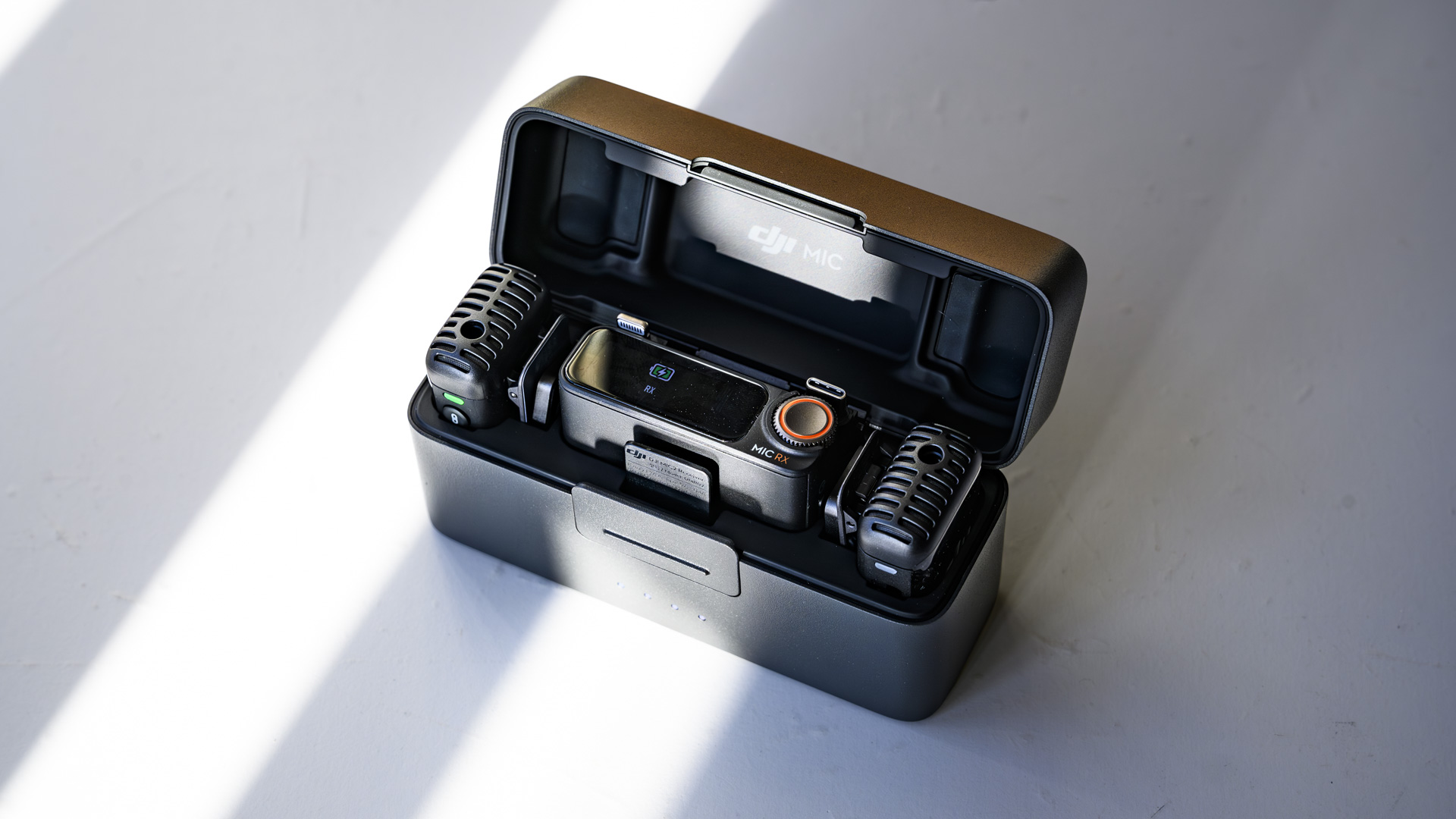
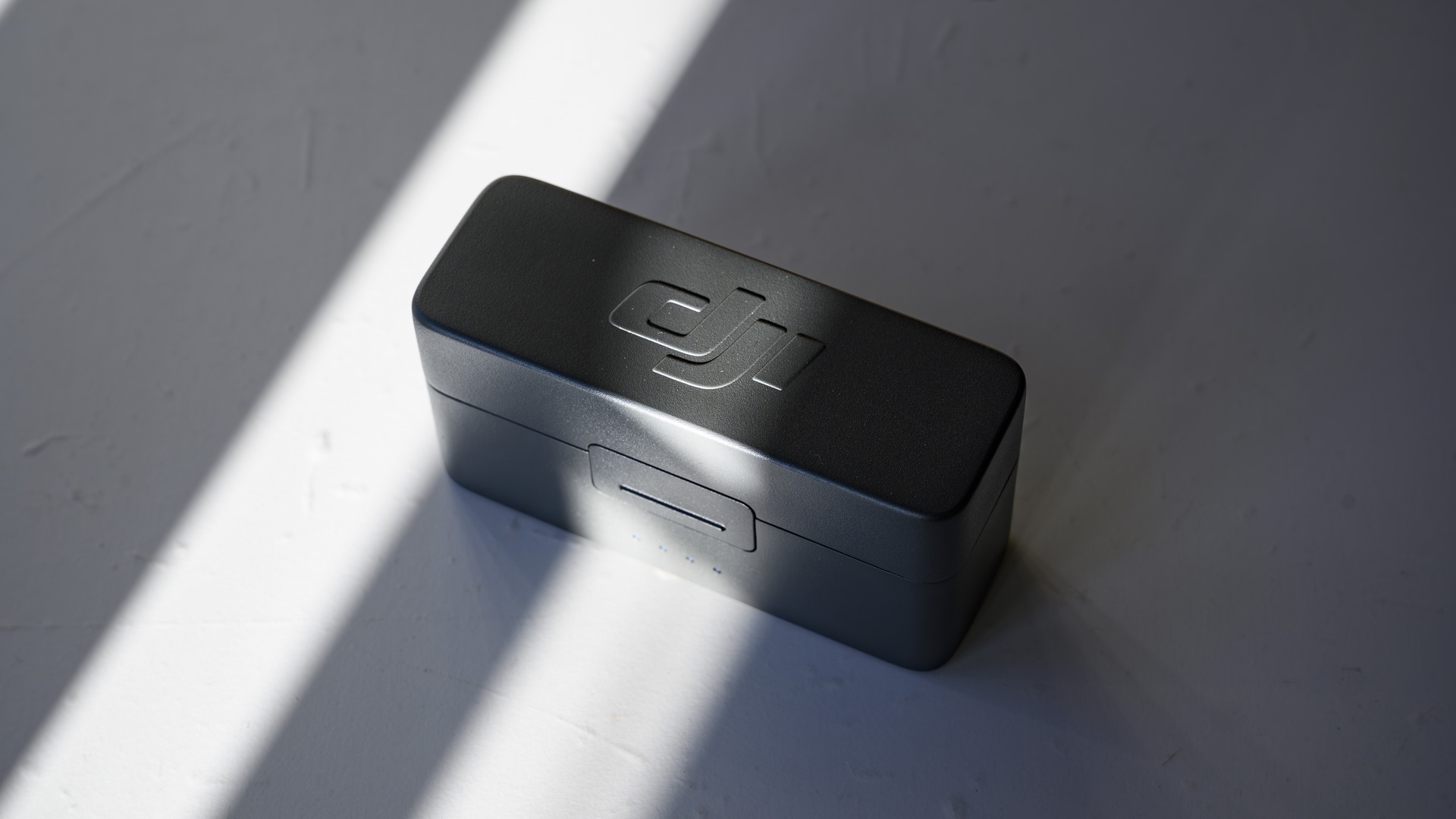
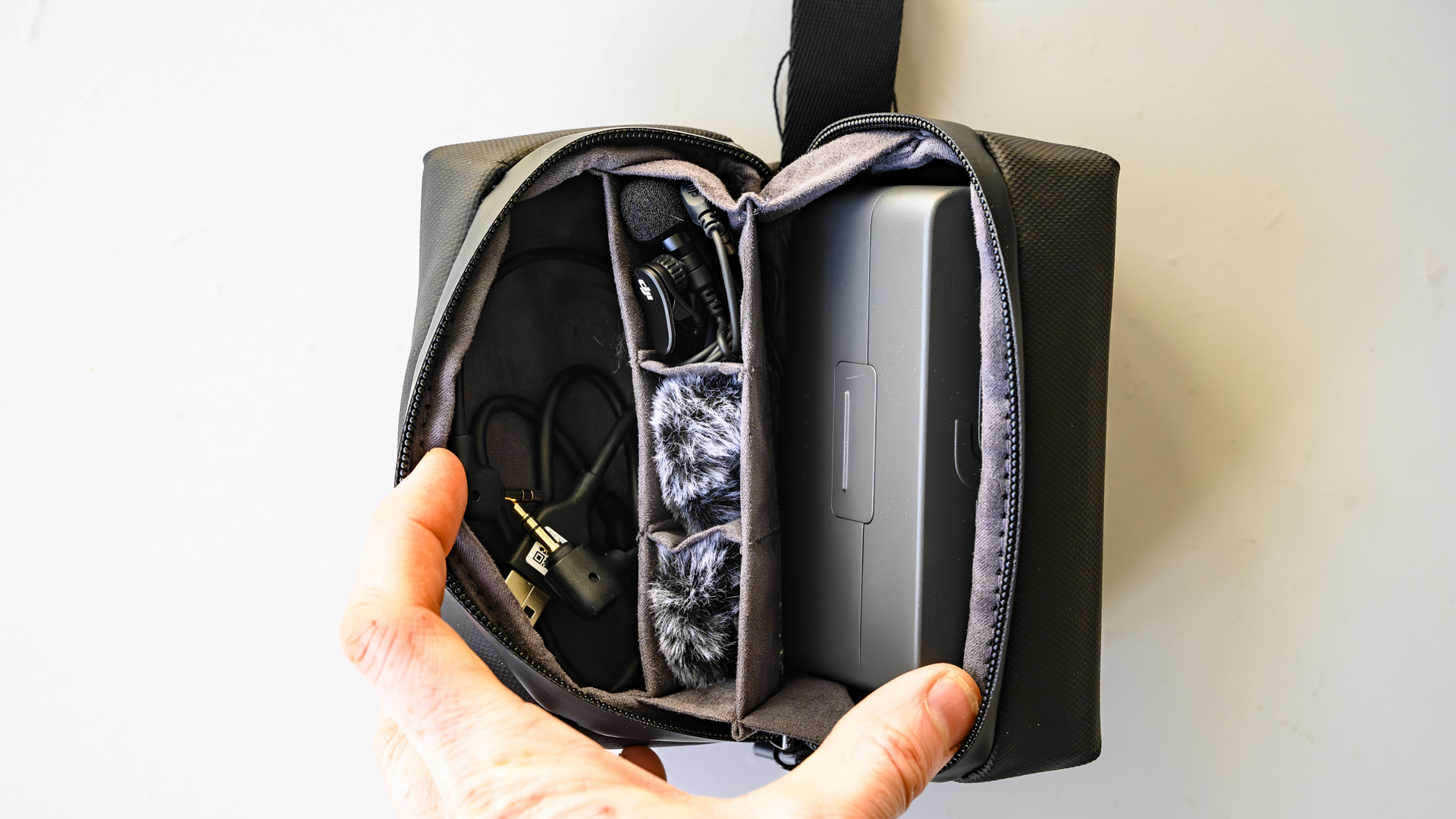
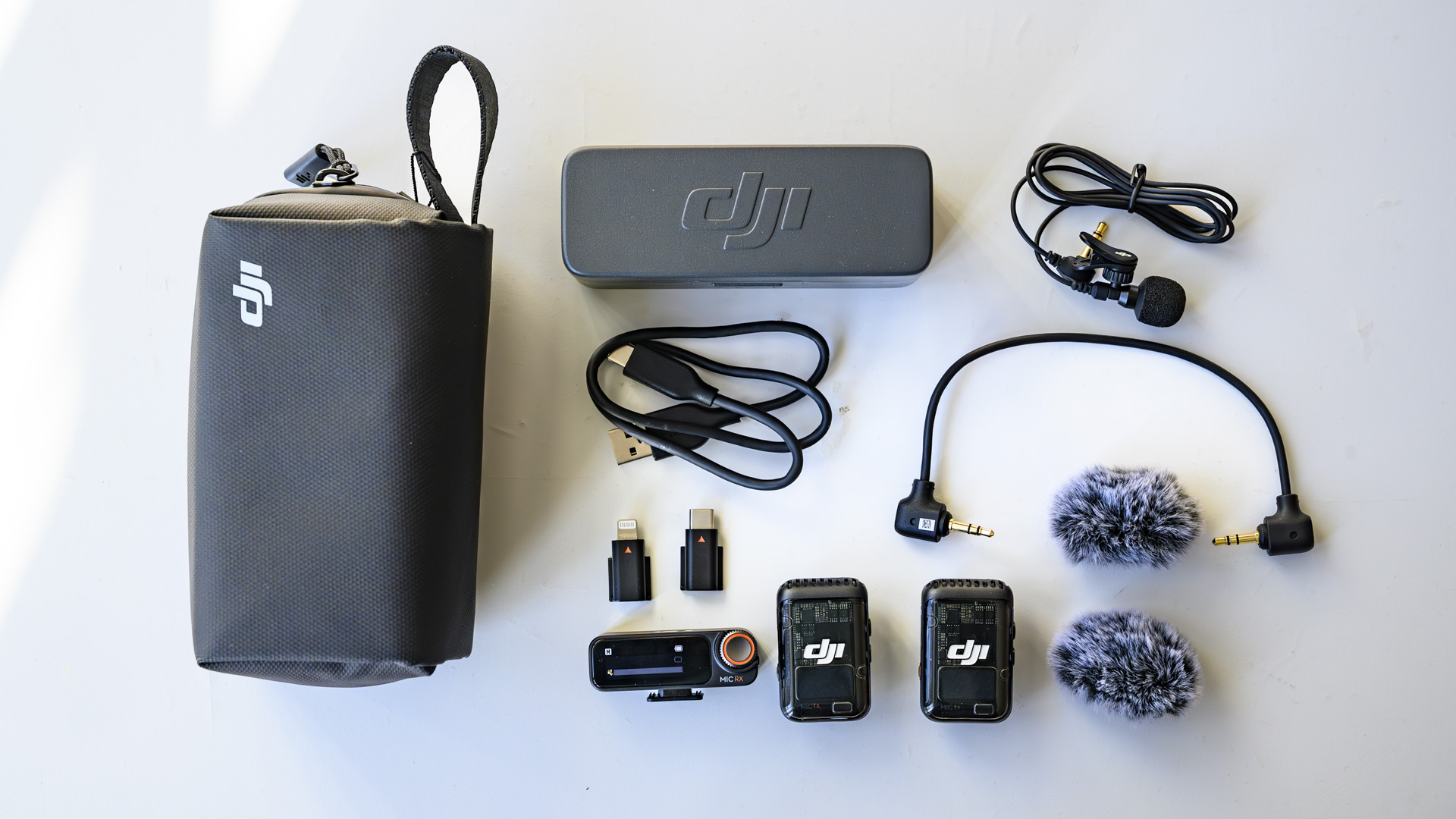
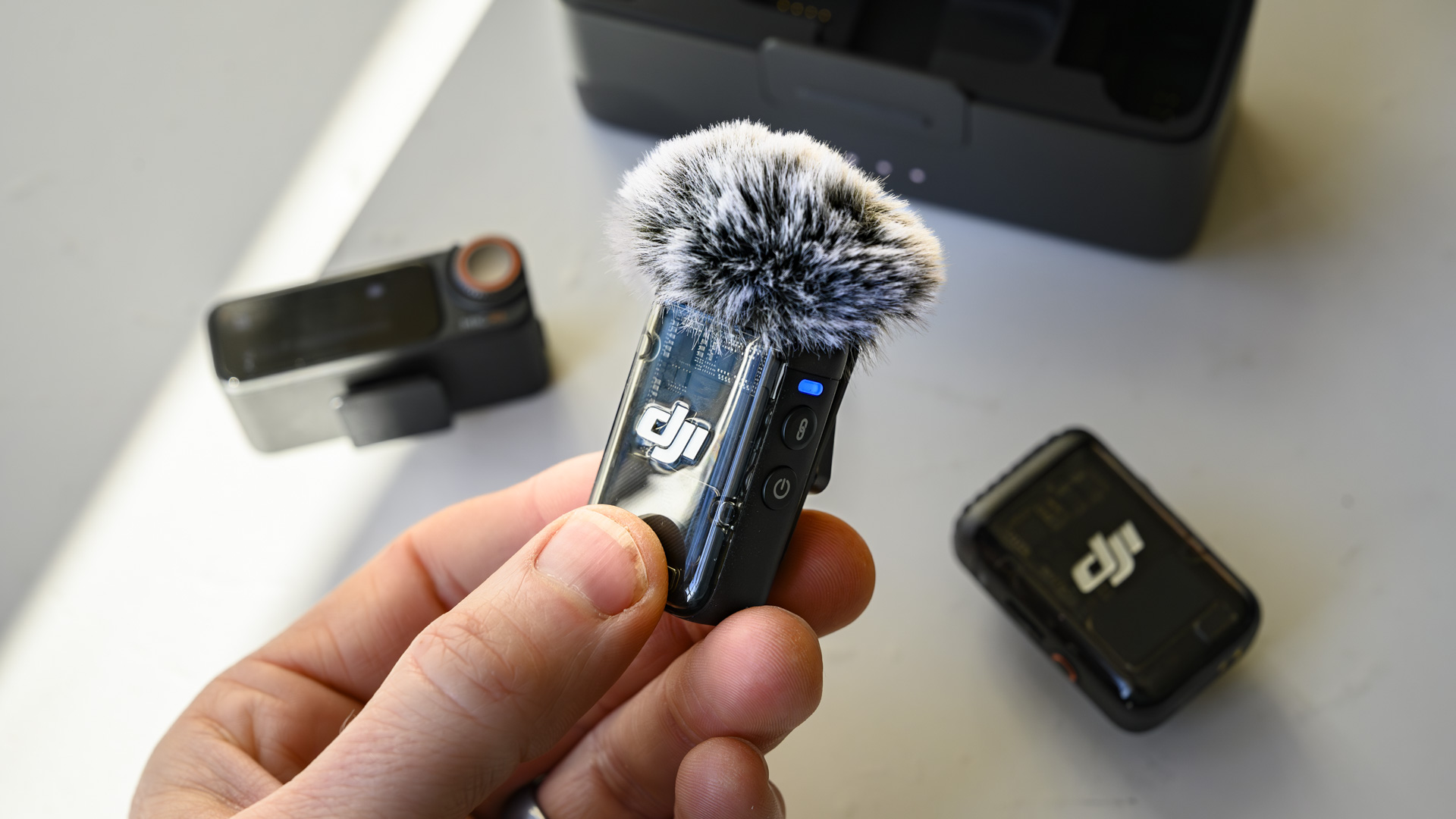
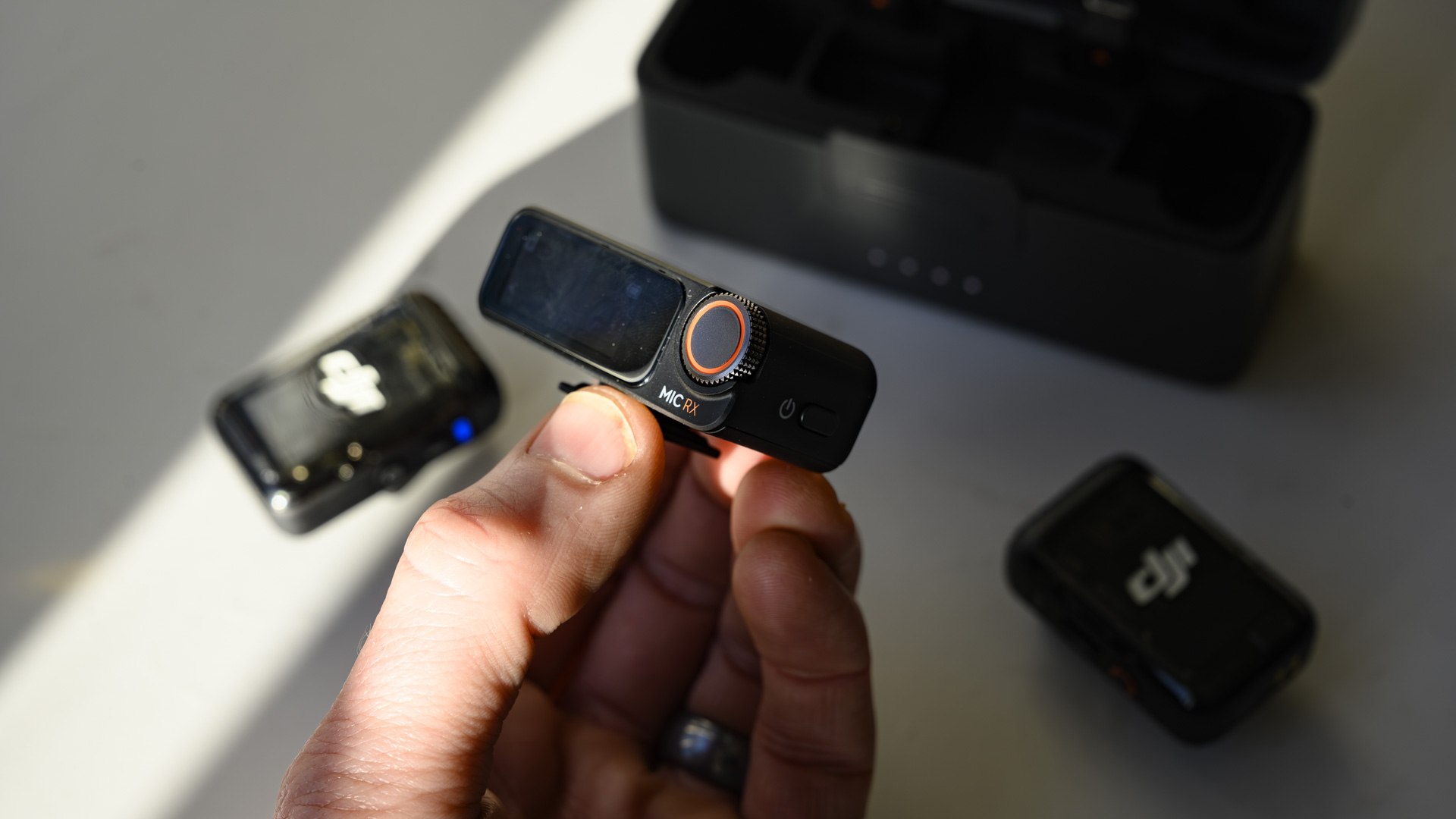
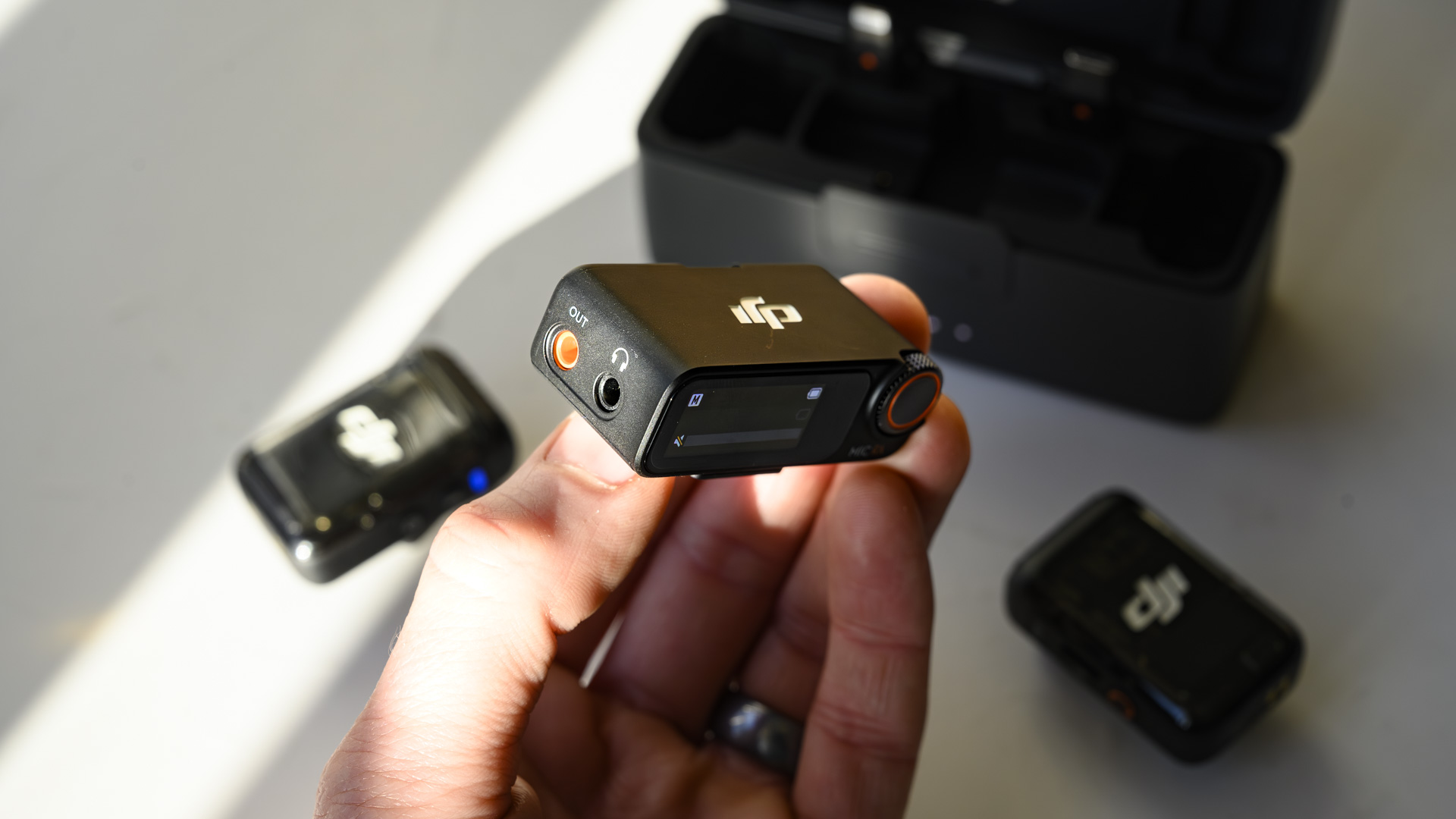
DJI Mic 2: features
Let's unpack the headline feature: 32-bit float. This is all the rage in the video production world, and rightly so, as it affords great flexibility for small crews that need a mic that simply captures sound clearly, even when the volume gets super-loud all of a sudden, or if your main subject is painfully quiet.
In technical speak, 32-bit has a dynamic range of 192db, but it's not a fixed frequency point, and can encode wider values with a potential range that covers up to 1,528dB. That's the flexibility I was just talking about.
If your interviewee shouts into the mic, the audio won't clip; if they speak very quietly, you can raise the volume without introducing audio noise. Put simply, vocals should remain clear in any situation. Speaking from experience working on high-stress shoots with low resources, 32-bit float has been a lifesaver.
By contrast, the highly capable first-gen DJI Mic 2 records 24-bit audio with a range up to 144.5dB, while mics that record in 16-bit only cover 96.3dB. If you set audio gain correctly from the start, 24-bit should sufficiently capture the required range of audio frequencies. However, the reality for many video productions is that audio simply cannot be monitored easily on set, where anything can happen, including sudden high-frequency incidents (loud noises).
You can see the difference between using the DJI Mic 2 and a phone's built-in mic below…
@techradar ♬ just outside, you can see the northern lights - Daniel G. Harmann
Digital photography is a loose analogy, but it's a bit like the difference between shooting raw instead of JPEG. If you nail the exposure and color correctly at the point of capture, then JPEG is sufficient; if you don't – say your photo is too bright and detail in the sky is washed out – then that detail is lost.
If you shoot in raw instead, you can recover way more high-quality detail that would otherwise be lost with JPEGs when the exposure is too bright or dark, and more easily correct color temperature when it’s off. So, even if you get it wrong at capture, you can still produce a decent final image.
While shooting raw isn't quite the same as using 32-bit float, you get the picture. When things go wrong – which they often do on set and on location, no matter your skill level – then 32-bit float gives you the flexibility you need to handle the unexpected.
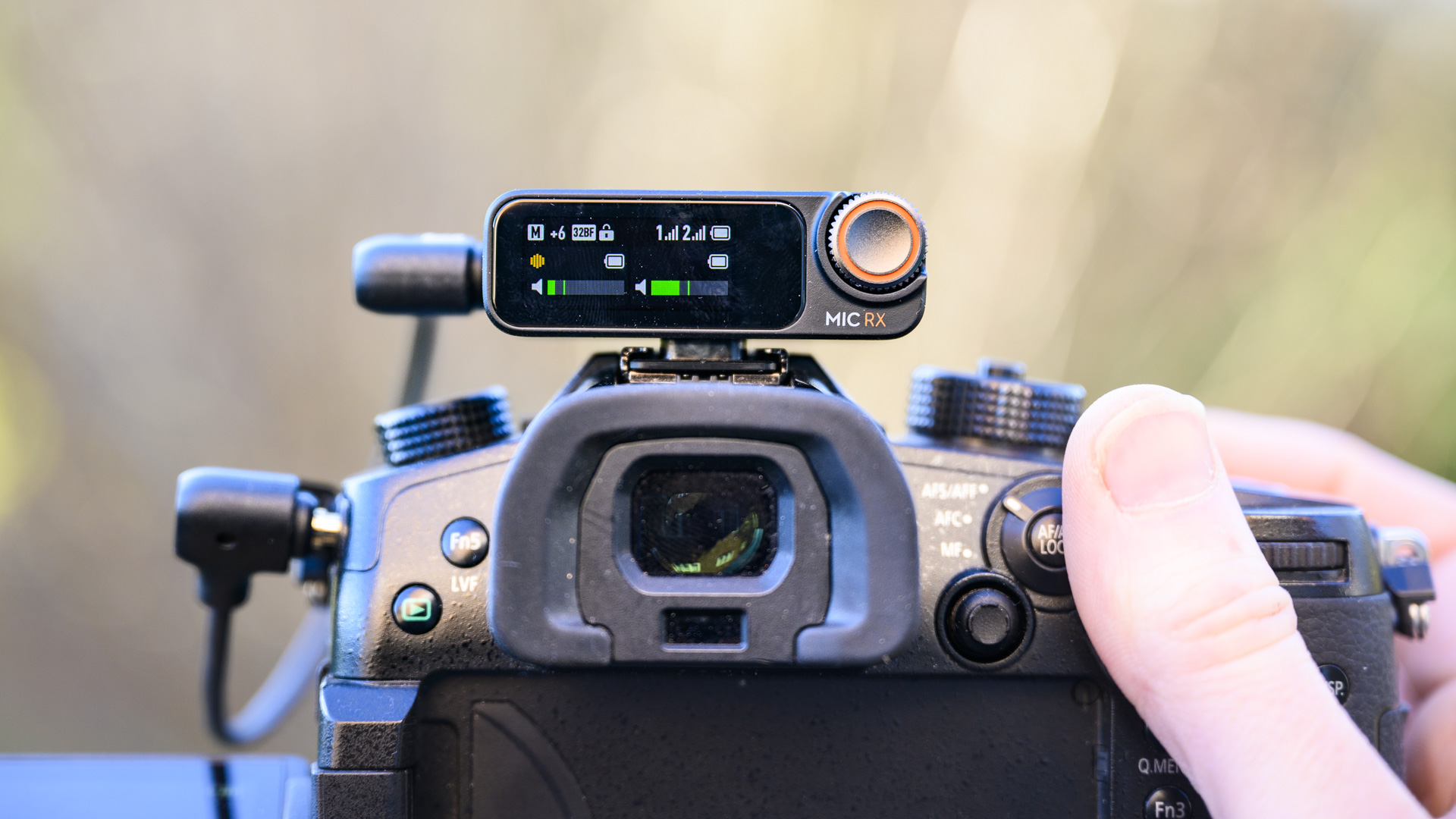

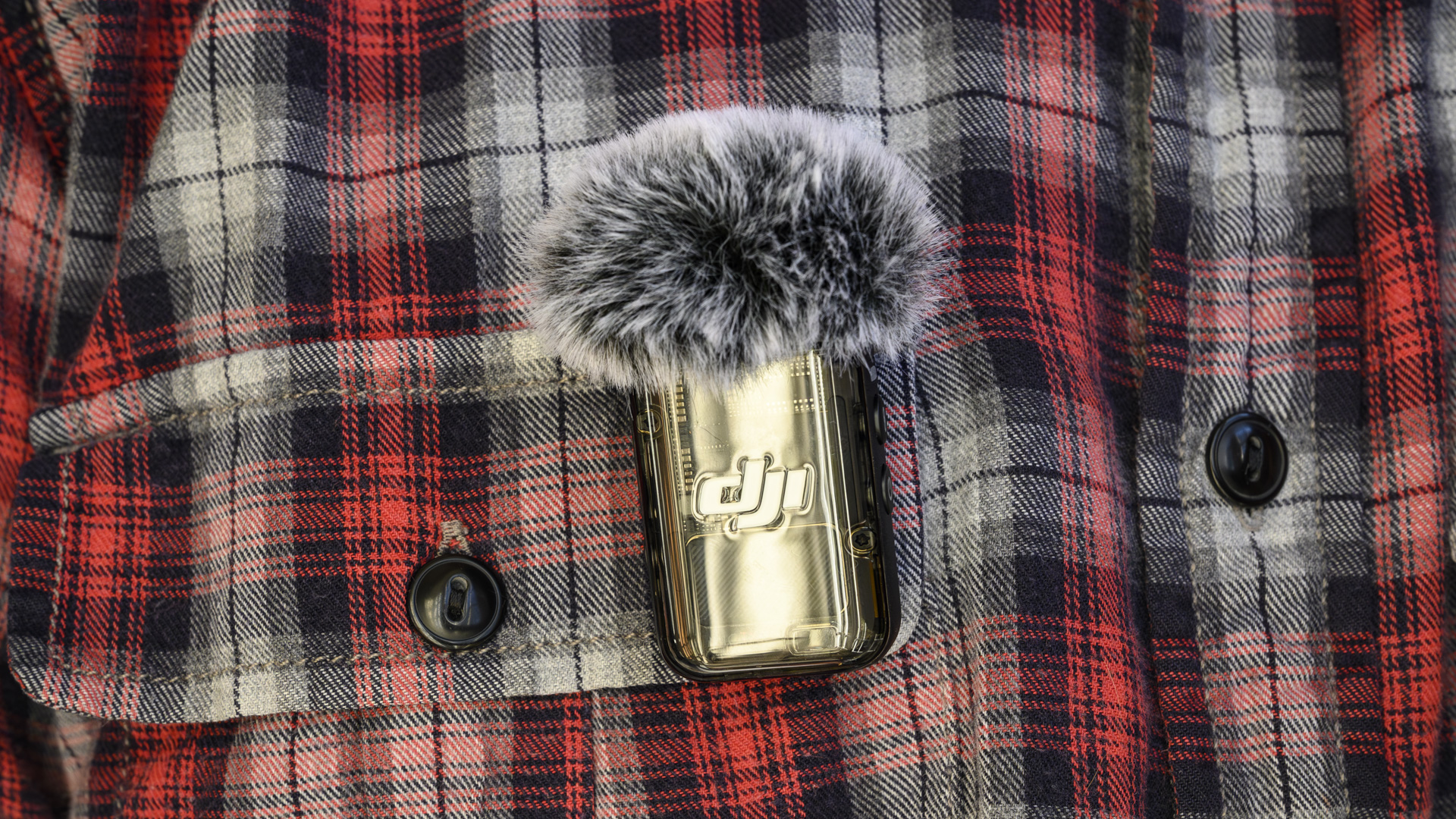
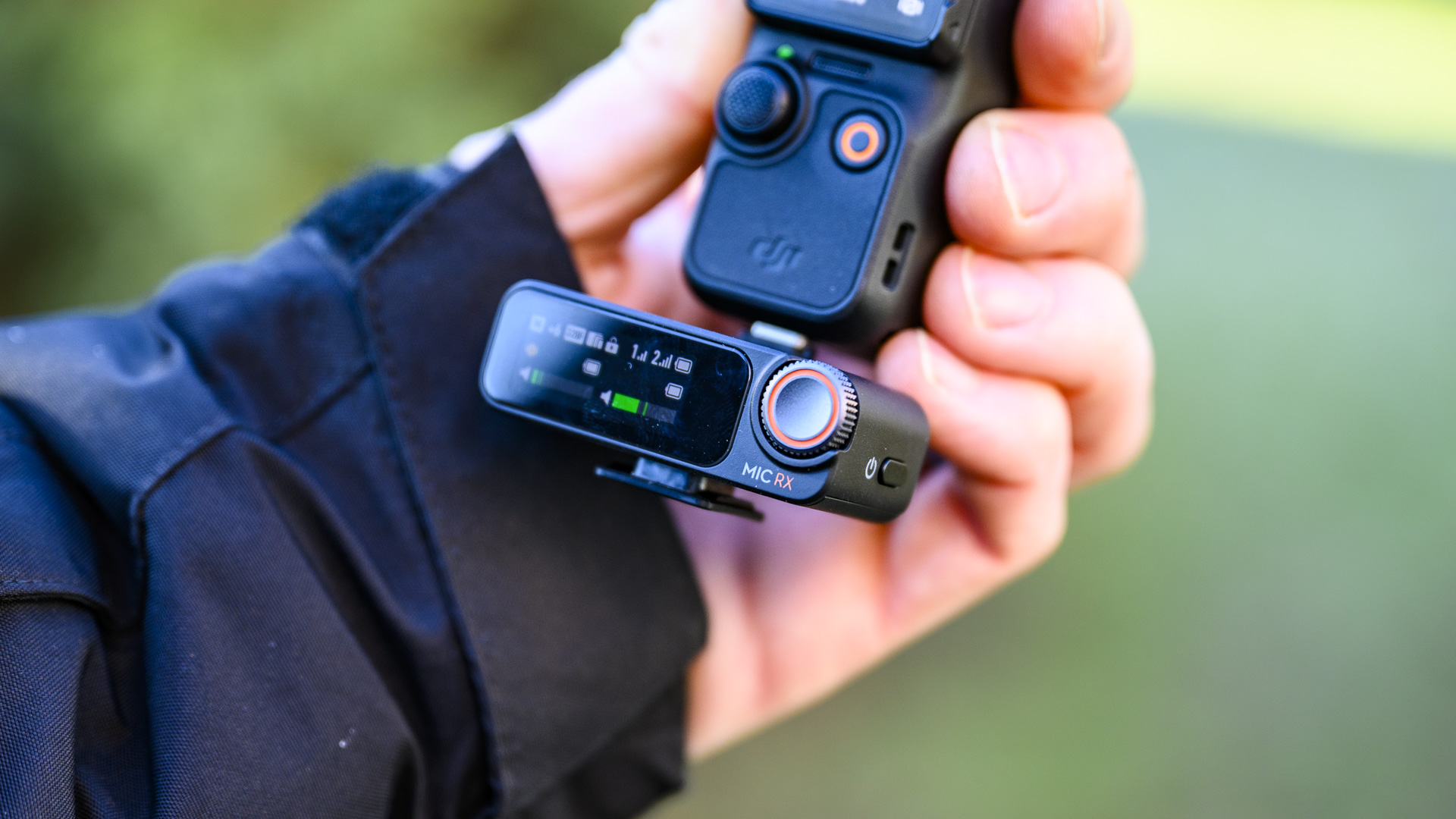
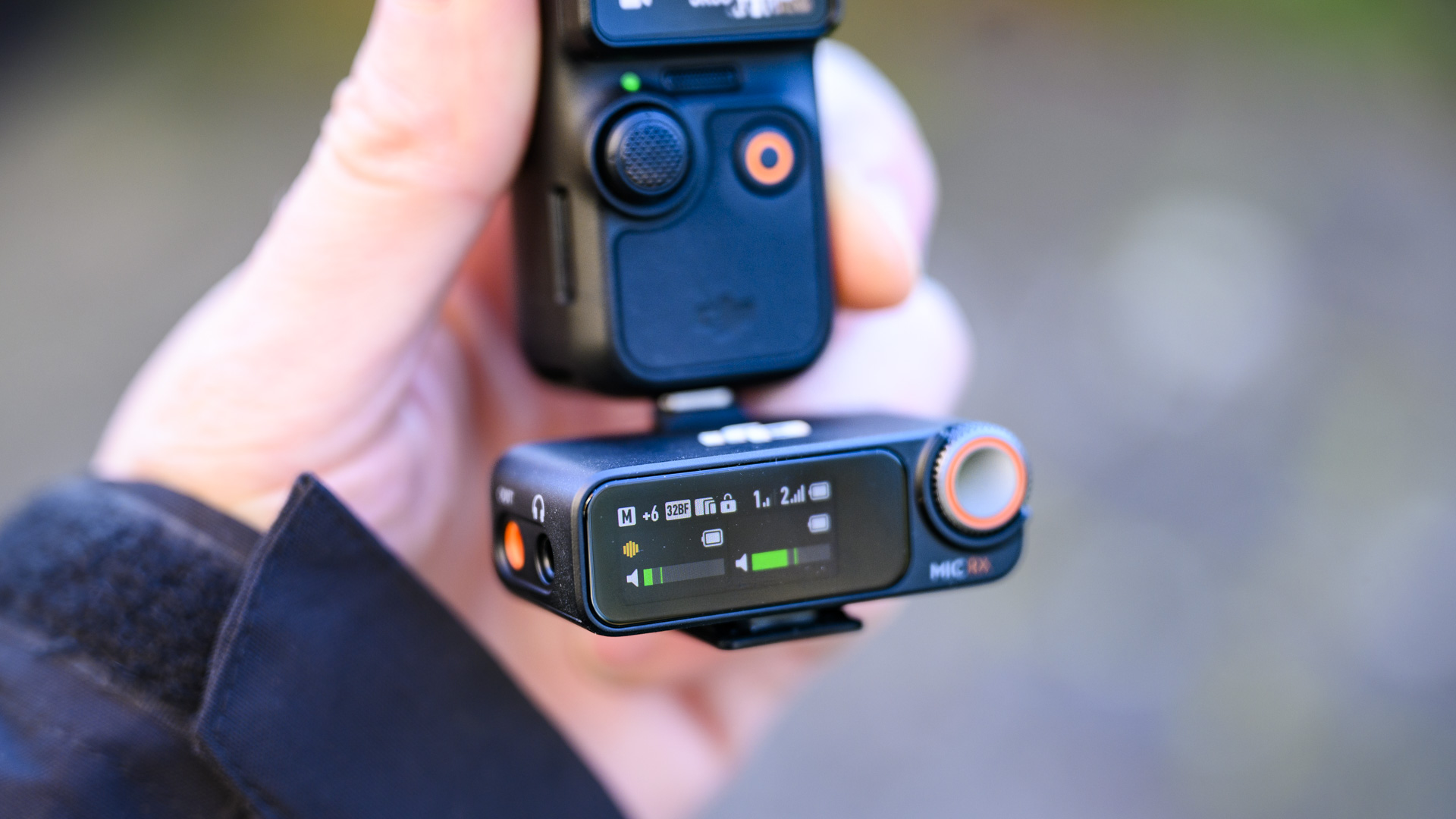
While 32-bit float gives a wider dynamic range for complete sound and the flexibility to avoid clipping, it still needs a decent-quality mic, and to that degree DJI's omnidirectional mics have been lavished with AI noise reduction that effectively reduces environmental noise.
Now you might want environmental noise in your audio for a richer viewer experience; however, if it overpowers vocals then you need to keep a lid on it. With the DJI Mic 2, you get to choose – the new AI noise reduction can be turned on and off in an instant with a simple tap of the icon on the 1.1-inch touchscreen.
DJI Mic 2: performance
I've used the mic on a windy countryside walk, and in a noisy conference hall – though I haven't travel-vlogged from a bustling city street yet – and the new feature works really well. There's certainly a marked difference in quality between the DJI Mic 2 and the built-in mic of your smartphone or camera.
I can tell that the smart noise reduction feature will be able to deal with the hum of road traffic or an air conditioner fan near an interviewee, ensuring maximum possible vocal clarity, and making this is a great kit for small teams that do lots of interview content.
You can now also bypass the Mic 2's receiver altogether, using a direct Bluetooth connection between camera and transmitter – after all, there are times when you'd rather not plug the receiver into the underside of your phone (or your DJI Omso Pocket 3 / Osmo Action 4). You lose the ability to record in 32-bit float with this connection method, but it could be worth the compromise.
You can also opt for Safety Track, which simultaneously records a backup second track at -6dB into the transmitter, which has 8BG of built-in storage that's sufficient for thousands of hours of audio content. It's a handy feature should there be severe audio spikes.
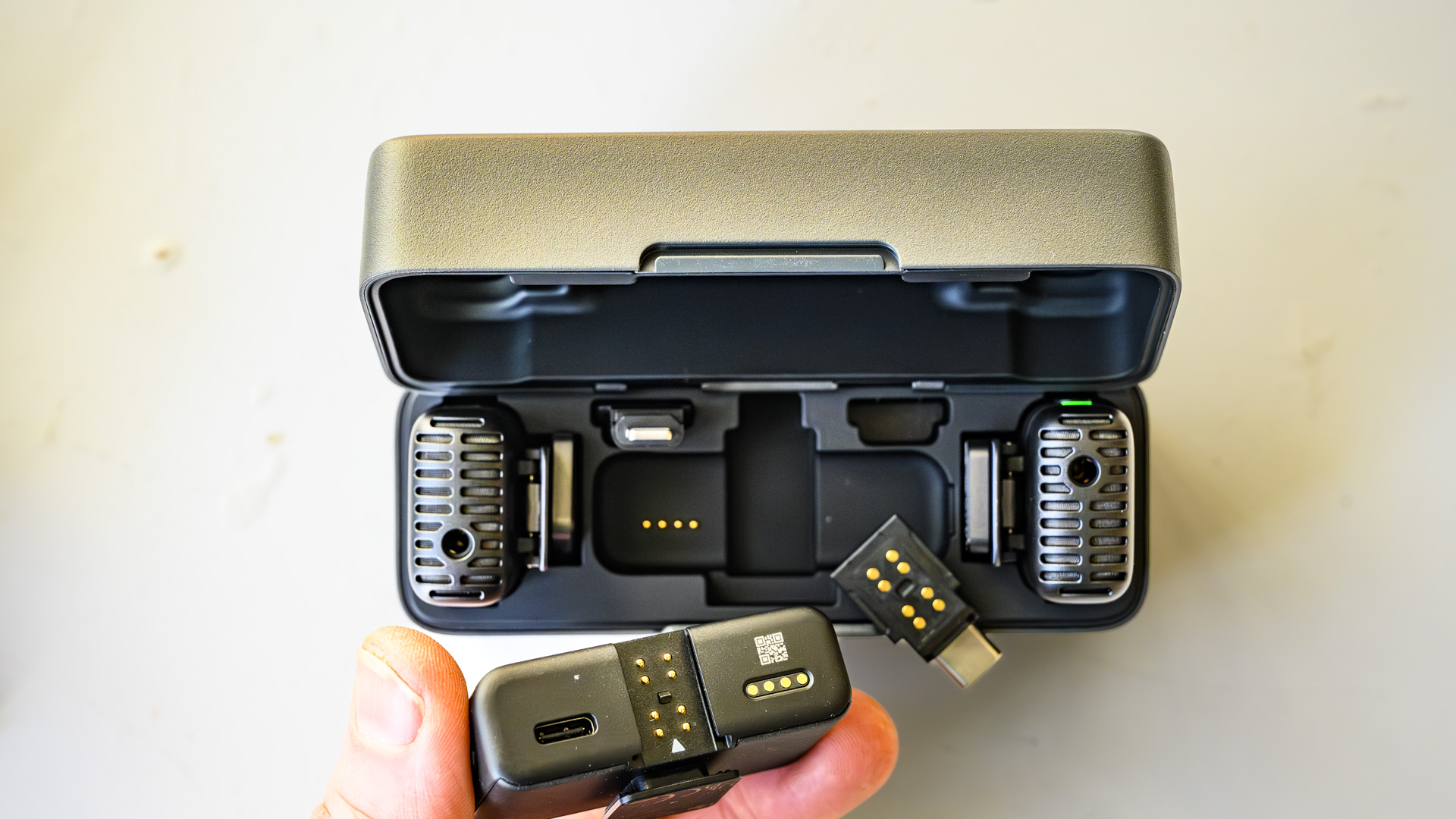
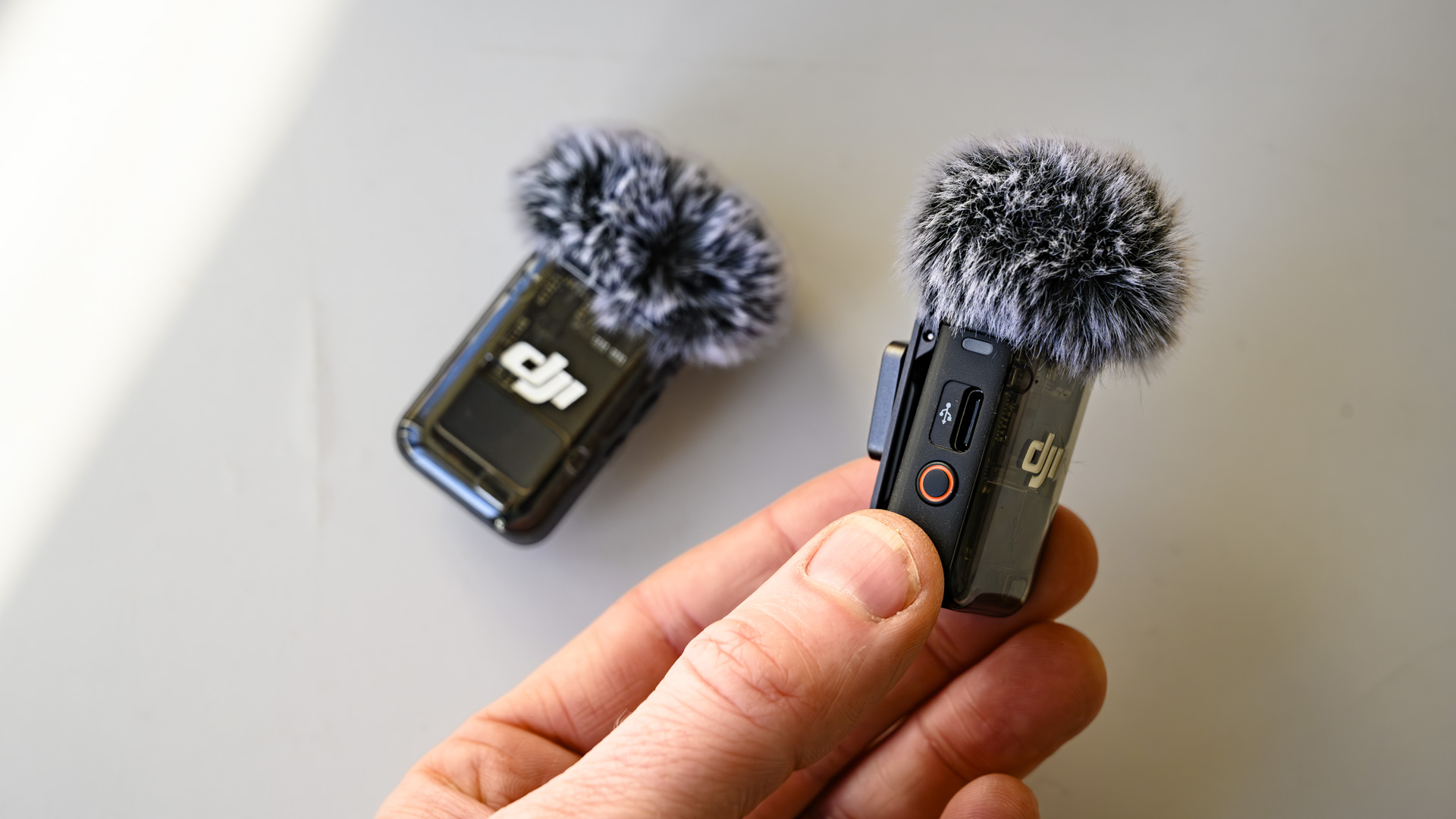

Despite its pro-level features, you don’t need to be an audio expert to get started with the DJI Mic 2 – quite the opposite in fact. As I said before, the complete kit has everything you need: it includes a charging case, in which you can store and charge the two transmitters (mics) and one receiver, and in which all three devices are automatically paired, so they’re ready to go in an instant.
It’s super-quick to set up the transmitters, using the strong magnets that securely fix them in place on clothing, or a clip if you'd rather not use the magnets. If the transmitters are a little bulky for your taste, an optional lav mic can be attached instead.
You can use the Mic 2 transmitter as a standalone omnidirectional mic with noise reduction and record onto its 8GB built-in memory, but most people will use the mics with the receiver connected to a camera that has USB-C, Lightning, or a 3.5mm jack connectivity, with audio added directly to the video files. That camera could be your phone, one of the best vlogging cameras, like the DJI Pocket 3, or many mirrorless and DSLR cameras.
Battery life has been upped from the first-gen model, too, from 15 hours to 18 hours, making this is an excellent bit of kit for extended time out in the field.
If you want to produce engaging video content, great quality sound is vital, but achieving that is easier said than done. For vloggers and small video production outfits often working on high-pressure shoots with limited resources, the powerful, smart and no-fuss DJI Mic 2 is a superb option.
DJI Mic 2: Should I buy?

Buy it if...
Don't buy it if...
DJI Mic 2: How I tested
- I had the DJI Mic 2 for several weeks
- Used with a smartphone, the DJI Osmo Pocket 3, and a mirrorless camera
- I used it with and without 32-bit float and AI noise reduction
I used the DJI Mic 2 complete kit for several weeks, testing how easy it was to set up and connect to devices, as well as testing the quality of its audio recordings.
I've used its 32-bit float audio capture and other settings, and I've used it with the AI noise reduction turned on and off to make comparisons. I've used the mic outside on windy countryside walks, and in echoey interiors, and I also used it to record videos for TechRadar's TikTok channels.
- First reviewed January 2024







